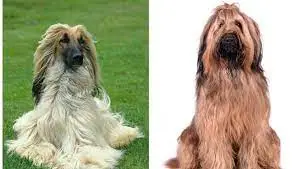The Gentle Giant: The Ultimate Guide to Great Danes

Forget the ferocious beasts guarding castles in fairytales. The Great Dane, while undeniably massive, is anything but a monster. In fact, these gentle giants are renowned for their sweet and loving nature, making them wonderful companions for the right families.
Quick Facts about Great Danes

- Origin: Germany
- Size: Largest dog breed, reaching up to 32 inches tall at the shoulder
- Breed Group: Working Group
- Life span: 7-10 years
- Coat: Short, smooth coat in various colors including brindle, fawn, black, and harlequin
- Temperament: Gentle, loving, and loyal with a playful side
- Exercise Needs: Moderate to high daily exercise
- Training: Trainable despite their size, early socialization and positive reinforcement are key
- Health: Prone to certain health conditions like hip dysplasia and bloat
- Popularity: Ranked 18th most popular dog breed by the American Kennel Club (AKC)
“If you are thinking about getting a dog, do it, but only if you are prepared to be owned.” – John Grogan (author of Marley & Me)
This quote perfectly captures the essence of owning a Great Dane. While incredibly rewarding, these magnificent creatures require a significant commitment from their owners.
Is a Great Dane Right for You?
Thinking about welcoming a Great Dane into your life? Before you dive headfirst, there are crucial factors to consider:

- Puppies: These adorable bundles of joy quickly grow into giants, requiring ample space and resources.
- Price: The initial cost of a puppy can be substantial, and ongoing expenses like food, vet care, and training add up.
- Temperament: While generally gentle, can be boisterous and require proper training to ensure good behavior.
- Adoption: Consider giving a loving home to a rescued. Many wonderful organizations dedicate themselves to finding forever homes for these deserving dogs.
- Training: Early socialization and consistent training are crucial for raising a well-adjusted
Living with a Great Dane
Owning a Great Dane is a unique and rewarding experience. Here’s what you need to know:
- Cost of Ownership: Not budget-friendly pets. Factor in the initial puppy price, food, vet care, training, and potential health concerns.
- Training a Great Dane: Despite their size, intelligent and trainable. Positive reinforcement methods and early socialization are key to raising a well-mannered companion.
- Great Dane Care: Regular grooming, a balanced diet, and plenty of exercise are essential for maintaining your dog’s health and well-being. Be aware of potential health issues like hip dysplasia and bloat, which require proactive preventative measures.
Are Great Danes Good with Kids?
While gentle giants, not automatically suitable for every family with children. Their large size and potential clumsiness necessitate careful supervision around young children.
Can Great Danes Live in Apartments?
Best in spacious homes with ample room to roam. Apartment living can be challenging, but not impossible, with dedicated owners willing to provide sufficient exercise and outdoor time.
Gentle Giants: More Than Just Size
More than just their impressive stature. These gentle dog breeds often form strong bonds with their families, showering them with affection and loyalty. Their playful personalities and goofy antics can bring endless joy to any household.
Where to Find Your Great Dane
Bringing a Great Dane into your life is a big decision. Responsible breeders prioritize the health and temperament of their dogs. Alternatively, consider adopting a puppy from a rescue organization, offering a loving home to a deserving animal.
- Lifespan: While their average lifespan is 7-10 years, providing proper care can contribute to a longer, healthier life.
- Shedding: Their short coat sheds moderately, requiring regular brushing to manage loose fur.

How long do Great Danes live?
As mentioned, the average lifespan is 7-10 years with proper care.
Do Great Danes shed a lot?
Yes, they shed moderately, requiring regular brushing.
Are Great Danes easy to train?
Intelligent and trainable, but require consistent positive reinforcement methods.
What are the most common health problems in Great Danes?
Hip dysplasia and bloat are common health concerns. Regular vet checkups and preventative measures are crucial.
Where can I find a Great Dane breeder or rescue?
Reputable breeders can be found through the American Kennel Club (AKC) website. Many fantastic rescue organizations exist across the US. Here are a few examples:
Rescue of New England: https://www.gdrne.org/
Rescue Inc.: https://www.greatdanerescueinc.com/
Rescue NC, SC: https://greatdanefriends.com/adopt-dogs/
Conclusion
Great Danes are truly special creatures, offering a unique blend of gentle nature, playful spirit, and undeniable grandeur. If you have the space, resources, and commitment to provide a loving and responsible home, a companion could enrich your life in countless ways. Remember, adopting a puppy from a rescue organization is a wonderful way to give a deserving dog a second chance at a happy life.

Petscaretip – How To Care Your Pets
Address: 809 Dallas St, Houston, TX 77002, USA, Houston, TX, United States, Texas
Email: [email protected]










